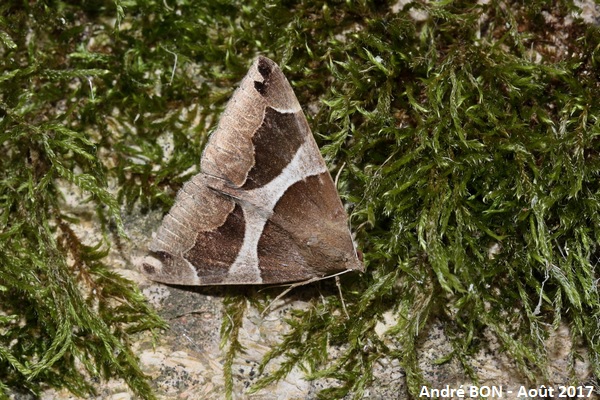
| Passenger (Dysgonia algira (Linnaeus, 1767)) |

|
|
Scientific name: Dysgonia algira (Linnaeus, 1767) Common name: Passenger French name: Passagère Order: Lepidoptera Suborder: Heterocera Family: Erebidae Subfamily: Erebinae Wingspan: 40-46 mm. Biotope: Forests, groves, woodland edges. Geographic area: Southern half of Europe, North Africa, east to Central Asia. Flight time: May to August. Number of generations : 2 Caterpillar: Yellowish-grey, darker on the upper side, with small black longitudinal lines. The stigmas are black. Host plant: Brambles (Rubus), Willows (Salix) and Broom (Genista). |
The Passenger shows fore wings with very contrasted colours and sharp markings. They are a general brown colour, slightly purplish when freshly emerged, and barred by a broad whitish band with curved contours and narrowed in the middle. There is a wide pale marginal band with two dark spots near the apex. The hind wings are greyish and a little darker in the basal and antemarginal areas. There is a similar species, the Jigsaw (Dysgonia torrida) which is found further south and which can be seen in the extreme south of France. These species are difficult to differentiate on photos. Here are some indications. Dysgonia torrida has a slightly larger wingspan. The median band is rather grey on Dysgonia algira whereas it is lighter and whiter on Dysgonia torrida. The basal edge of the white median band has a very slightly angular shape where the band is narrowest on Dysgonia algira. The curve is more regular at the same place on Dysgonia torrida. |
| [To know more about the Passenger] [Top] |

|
The location of this sighting is enough to identify the Passenger, we are far from the south of France. Furthermore the median band is greyish in colour and you can distinguish a slight angle on the basal side at the narrowest point (best visible on the left wing). |